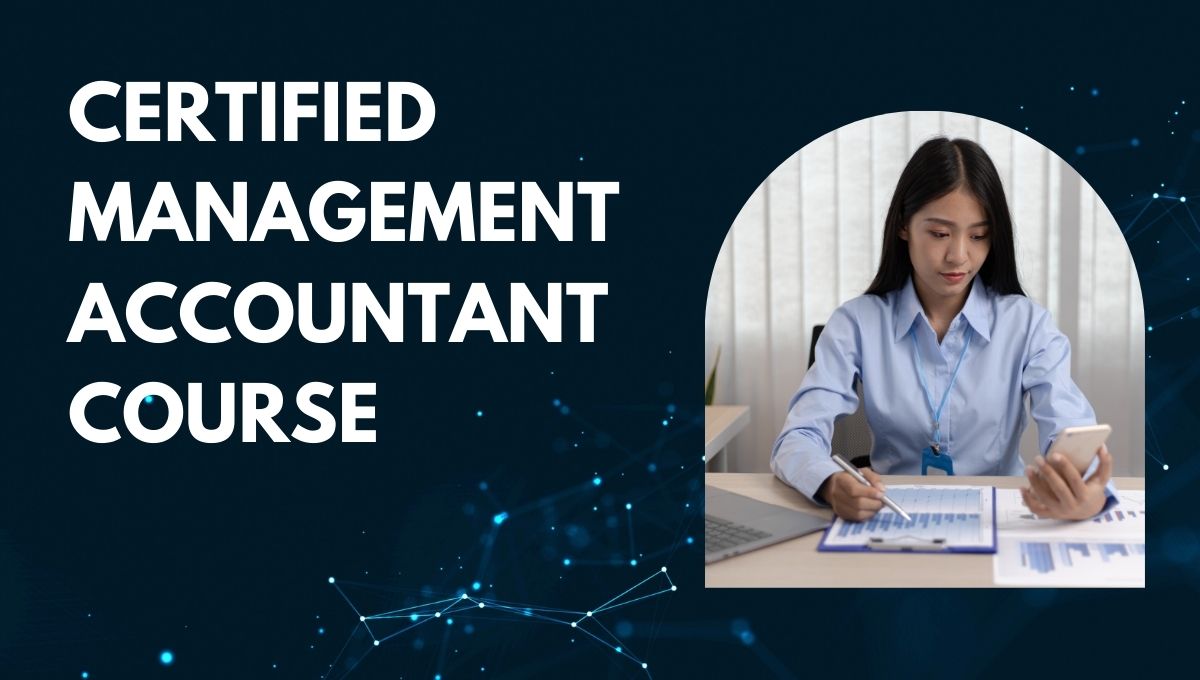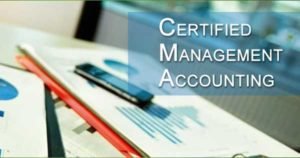Is management accounting your chosen path for career advancement? If yes, then I would say the CMA course – Certified Management Accountant – is your ticket to success. An internationally reputed certification, it provides a solid foundation for professionals in financial management and strategic decision-making. One should first understand the course structure, exam pattern, study plan, and passing criteria before starting the path of a CMA.
In this guide, we will provide very specific details of the syllabus, duration, exam-related information, and so on for you to confidently carve out a path toward your CMA certification.
What is the Certified Management Accountant Course?
The CMA Course – Certified Management Accountant – is a global credential from the Institute of Management Accountants (IMA) that certifies one’s proficiency in financial planning, analysis, management, and decision-making for making oneself a highly sought-after resource within the corporate sector.
Why CMA?
- Recognized in 150+ countries
- Greater salary potential than non-certified colleagues
- A key to leadership positions in finance, accounting, and management
- Helps your capacity for analyzing financial data and offering strategic insights
- Gives a competitive advantage in banking, consulting, and corporate finance sectors
- Prepares professionals with skills to manage business risks, cost management, and investment decisions
With the increasing need for management accountants, a CMA certification can provide opportunities in the international arena and ensure career growth in the long run.
CMA Course Structure
The CMA certification has two parts that examine your knowledge in different fields of financial management.
| Part | Topics Covered |
| Part 1 | Financial Planning, Performance, and Analytics |
| Part 2 | Strategic Financial Management |
There are several sections in each part that cover financial reporting, risk management, corporate finance, and decision analysis.
CMA Exam Pattern
The CMA exam pattern is structured to test theoretical concepts as well as practical application abilities. Here’s what you need to know:
Duration: Both exam parts take 4 hours each.
Format:
100 multiple-choice questions (MCQs) (75% weightage)
Two essay questions (25% weightage)
Passing Score: 360 out of 500.
Exam Windows:
January-February, May-June, and September-October
You have to complete both parts within three years of registration.
CMA Study Plan
A good study plan for CMA will go a long way in your preparation. Proceed as follows:
- Devote 15-20 hours every week for a minimum period of 4-6 months for each part.
- Use official IMA materials, online CMA courses, and test banks.
- Prepare mock exams on a regular basis to monitor progress.
- Concentrate on weaker areas and review often.
CMA Passing Criteria
The passing criteria for CMA mandate that candidates:
- Score a minimum of 360 out of 500 in each part.
- Score at least 50% of the MCQs to enable the essay section.
- Finish both parts within 3 years from registration.
CMA Course Duration
- Minimum Time Needed: 6-9 months (studying full-time).
- Average Time Needed: 12-18 months (for professionals).
- Maximum Time Needed: 3 years to finish both parts.
CMA Syllabus Coverage
| Part 1: Financial Planning, Performance & Analytics | Part 2: Strategic Financial Management |
| External Financial Reporting | Financial Statement Analysis |
| Cost Management | Corporate Finance |
| Planning, Budgeting & Forecasting | Risk Management |
| Performance Management | Investment Decisions |
| Internal Controls | Professional Ethics |
CMA Certification Cost
| Category | Fees (USD) |
| IMA Membership | $280 (Annual) |
| Entrance Fee | $280 |
| Exam Fee (Per Part) | $460 (Per part) |
| Total Cost | $1,480 |
Career Opportunities After CMA
The Certified Management Accountant qualification opens doors to work in such positions as:
- Financial Analyst: responsible for analyzing financial statements, market trends, and business opportunities.
- Management Accounting: Internal Financial Planning, Budgeting, and Cost Control related to organizations.
- Finance Manager: Following the management of financial operations, the management of risk, and the development of strategies for the maximization of profit.
- Corporate Controller: Internal Control, Compliance, and Financial Reporting.
- CFO-Chief Financial Officer- responsible for leading financial strategy, investments, and decisions at the corporate top echelons.
- Risk Manager: responsible for identifying and mitigating operational and financial risks in business.
- Internal Auditors: They are responsible for ensuring the compliance of organizations with laws and maintaining financial transparency.
- Cost Accountants: Maintain and develop cost accounting systems that will create real business efficiency.
With an increasing need for financial professionals with strategic insight, they are highly valued in industries such as healthcare, manufacturing, technology, and consulting. The CMA credential provides security, growth, and access to high-level management positions worldwide.
Frequently Asked Questions (FAQs)
- What is the requirement for appearing for the CMA exam?
A bachelor’s degree and two years of relevant professional experience.
- Can I sit for the CMA exam prior to finishing my degree?
Yes, but you have to finish your degree before certification.
- How many times can I attempt the CMA exam?
Multiple attempts within the three-year eligibility window.
- Is the CMA more difficult than CPA?
The CMA is strategic finance-oriented, whereas CPA deals with broader accounting subjects.
- What is the average salary for a CMA?
$105,000 per year, based on experience and location.
- Does CMA involve work experience?
Yes, two years in a related field is required.
- Can I study for the CMA on my own?
Yes, but structured courses and test banks are advisable.
- What is the pass rate for the CMA exam?
Approximately 45-50% worldwide.
- Are there scholarships for CMA?
Yes, scholarships are provided by IMA to deserving students.
- How long does it take to become CMA certified?
6-18 months, depending on the pace of study.
Key Takeaways
- The Certified Management Accountant Course improves financial management capabilities.
- The exam consists of two parts for strategic and analytical skills.
- Applicants need to score a minimum of 360/500 in each exam.
- Passing the CMA opens doors to high-paying job opportunities
Conclusion
Obtaining a CMA certification can truly make a difference in the life of a professional looking to step into a leadership position in the field of finance or accounting. If you prepare with strategy and those who have strong discipline, they will be able to clear the CMA exam and open a floodgate of opportunities. It’s a certification aimed at improving technical expertise, along with an individual’s ability to make data-driven decisions and grow a business.
Emerging as a frontline warrior in the corporate world’s financial strategy and risk management practices, a CMA leads the fight against the continuously evolving finance industry. If you’re trying to find a high-paying profession recognized all over the world, then taking the Certified Management Accounting Course is the right investment for your future.
Then, are you ready to propel your career forward? Begin your CMA journey now!



